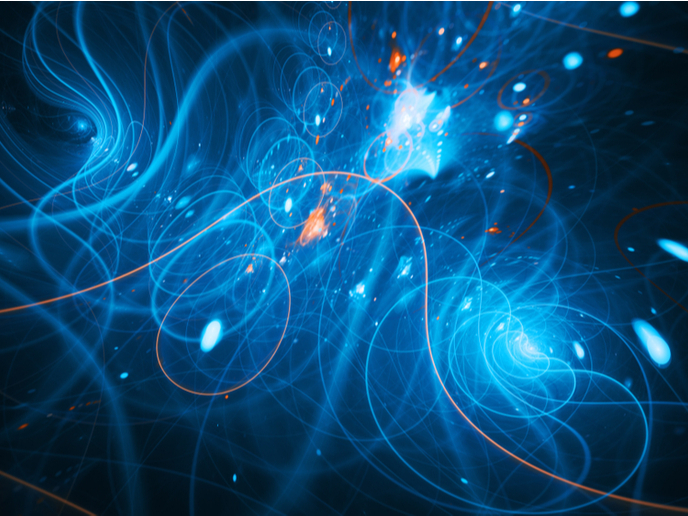Neutrinos and dark matter particles provide a window on the asymmetric Universe
Neutrinos are amongst the most abundant particles in the Universe, yet mysterious. They are so elusive that their properties are still being investigated. Early signs of neutrinos behaving differently when swapped out for antineutrinos – a form of charge-parity (CP) symmetry violation – provide an important clue about the preponderance of matter over antimatter. Another realm where additional sources of CP symmetry violation might be hiding is in the invisible dark matter sector. Asymmetries in the rotation fields of axions – hypothetical particles which got a lot of hype as promising dark matter candidates – are now being considered as a possible explanation of why the Universe is not empty. Funded by the Marie Skłodowska-Curie programme, ELUSIVES(opens in new window) is an initial training network that focused on the neutrino and dark matter phenomenology. One main quest was to study how these fields connect, especially when it comes to explaining why the CP symmetry seemingly occurs in some cases but not others. The network achieved significant progress, including over 280 scientific publications.
The origin of neutrino mass and antimatter mysteries
The T2K(opens in new window) experiment in Japan has reported the strongest hint so far that CP symmetry is violated by the weak interactions of leptons. Results indicated discrepancies between neutrino oscillations, namely the way muon-neutrinos transform into electron-neutrinos and the way muon-antineutrinos transform into electron-antineutrinos, at 3σ confidence. Detailed analyses of neutrino oscillation data led ELUSIVES researchers to set very stringent constraints on the sterile neutrino mixing parameters. A striking feature of neutrinos is their extremely small mass. This suggests that neutrinos do not only gain mass through the Higgs field, as most particles do. ELUSIVES scientists investigated the possibility that new heavier particle states might be crucial to the origin of neutrino masses. They suggested that the Large Hadron Collider and future ones could improve their sensitivity to them by searching for the powerful signal of displaced decays of neutrino mass mediators. Once this neutrino mass hierarchy problem is solved, scientists would be better able to unravel another pressing mystery about these ghostly particles: are neutrinos their own antiparticles? “Determining whether neutrinos are Majorana particles would have profound implications in particle physics. Scientists are investigating this possibility through a process called neutrinoless double beta decay(opens in new window),” notes Belen Gavela, professor of Theoretical Physics at the Autonomous University of Madrid and ELUSIVES coordinator. Project members working on the GERDA(opens in new window), CUORE(opens in new window) and the NEXT(opens in new window) experiments are searching for neutrinoless double beta decay in germanium-76, tellurium-130 and xenon-136, respectively.
Axions and axion-like particles solving many mysteries at once
The Axion Dark Matter Experiment(opens in new window) has defined tremendously good constraints on axion existence and properties. ELUSIVES scientists analysed whether the axion can be much heavier than previously considered; this would enlarge much the experimental domain in which the strong CP problem can be solved, even accessible by the LHC and future colliders. They also thoroughly assessed the contribution of axion-like particles to lepton dipole moments and explored whether there is a connection between axions and the minimal flavour violation theory. Other project members proposed novel gravitational wave signals of axion-like dark matter. In the XENON1T(opens in new window) experiment, project members contributed to setting the most stringent limits on weakly interacting massive particle interactions. ELUSIVES produced numerous other results about neutrinos and dark matter candidates that could lead future scientists to answer questions about the fundamental symmetries of nature. ELUSIVES’ results help maintain Europe’s leadership and competitiveness in neutrino and dark matter research.







